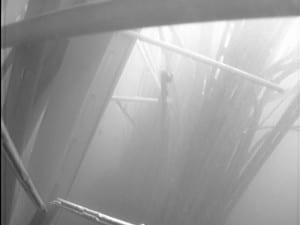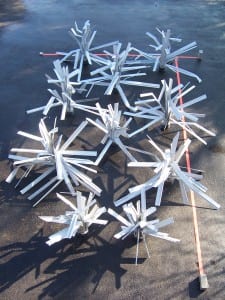Warmwater Lake and Pond Habitat Initiative

The Department’s fisheries biologists recently discussed the feasibility of installing fish habitat structures to mitigate for the absence or loss of physical fish habitat in some New Hampshire water bodies. This discussion was initiated because of the potential opportunity that exists to enhance warmwater fisheries through fish habitat improvement projects.
The overall goal of these habitat projects is to improve warmwater fish populations and the opportunities to fish for these species. An additional objective of installing shoreline habitat structures would be to increase youth fishing opportunities.
Improving fish habitat by installing structures has been a successful management strategy in use for many years in states across the U.S., as these structures can benefit both forage and sport fish populations in a number of ways. Habitat structures have been shown to provide important nursery areas for many fish species and can act to increase fish growth and survival. The abundance of forage fish species is often enhanced in areas with habitat structures, which in turn can increase the abundance and growth of sportsfish (this is especially relevant in some NH lakes and ponds where a decline or lack of forage fish and/or crayfish may be the result of the absence or loss of appropriate habitat). Additionally, studies have shown that habitat structures can increase nest density, spawning success and juvenile survival of both largemouth and smallmouth bass.
Using fish habitat structures in New Hampshire waters is currently in a conceptual phase and there is no firm timeline for when, where, and what types of structures will be used. Before formulating a specific plan, the Department’s fisheries biologist will first thoroughly review the existing scientific literature, inventory current habitat quality and quantity on various lakes and ponds, and communicate with anglers in an effort to better understand their interest in this type of initiative.

The Department is also actively pursuing a feasibility analysis of using fish habitat structures. The feasibility analysis will answer the following questions: Will fish habitat structures provide habitat for the fish species of interest? What types of structures have been used elsewhere and for what purpose? What types of structures (artificial or natural) are allowed under current regulations? What are the potential problems (maintenance, ability to obtain permits from NH DES, potential navigation issues, potential effect on other fish species such as invasive species) in using fish habitat structures? What are the costs of building, deploying and maintaining such structures? How will anglers use the fish habitat structures (i.e., how will they access them)? What monitoring efforts would be best suited for evaluation purposes?
Warmwater fish habitat projects offer an exciting opportunity to improve fish habitat and warmwater fisheries in New Hampshire lakes and ponds. Additionally, involving anglers in this process presents an excellent opportunity for the Department and anglers to work together towards the common goal of improving and sustaining our state’s fisheries resources for current and future generations.
CONTACT:
John Magee, Fish Habitat Biologist
Gabe Gries, Region 4 Fisheries Biologist and Warmwater Project Leader
